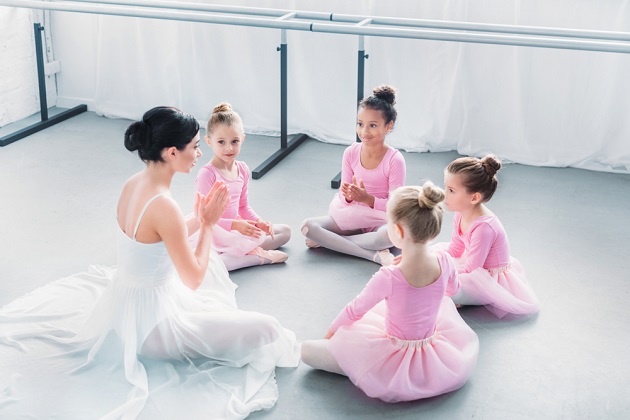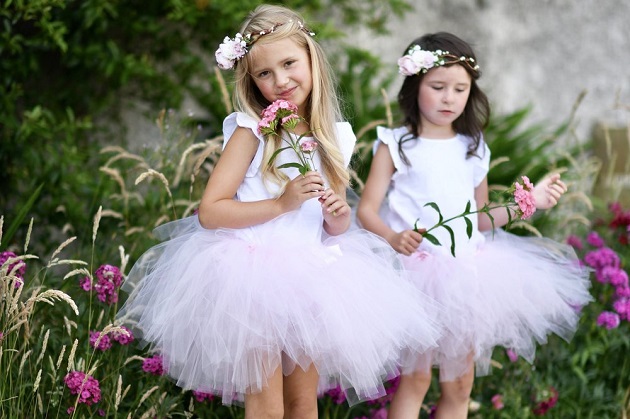The Iconic Symbol of Ballet: Discover the Story of Tutus
La Sylphide, Gisselle, Swan Lake, the Nutcracker… the tutu. With its ethereal charm and graceful allure, the tutu has been a symbol of classical ballet for centuries. This iconic garment has a rich history, spanning various styles and evolutions, and becoming the most precious piece of dancewear for a ballerina. If you are one, or you just love this intricate costume, join in our investigation of the fascinating history of tutus and explore the different styles that have emerged over time. We will also provide essential guidance on storing and caring for these exquisite dance garments.
The Enchanting History of Tutus

To comprehend the evolution of tutus, one must journey back in time to the courts of European nobility in the 16th and 17th centuries. The word “tutu” is believed to have originated from the French word “cucu,” which was a childish term for derrière. Early tutus were known as “paniers” and consisted of layered, hooped skirts that accentuated the wearer’s posterior.
Origins in France
Tutus trace their origins to the French courts, where they were first introduced as extravagant costumes for royal ballet performances. These early tutus were voluminous, heavily adorned with lace and jewels, and designed to emphasize the opulence of the era. When Marie Taglione played the Sylph in 1832 Paris, the ballet was changed forever. The audience was mesmerized and scandalized, but this performance was marked in history for introducing the pointe shoe and the tutu.
Transition to Romantic Tutus
As ballet evolved, so did the tutu. During the Romantic era in the early 19th century, tutus underwent a transformation. They became shorter, lighter, and less voluminous, allowing dancers to move with greater ease and grace. This shift in style also marked the emergence of the iconic romantic tutu, characterized by its mid-calf length and soft, flowing layers of tulle. The romantic style is ideal for expressive and lyrical movements like those in ‘Gisselle’ and ‘La Sylphide’.
The Emergence of the Classical Tutu
The classical tutu, with its shorter length, tightly fitted bodice, and multiple, short layers of tulle, made its debut in the late 19th century. It was a departure from the romantic tutu and is now the most recognized style. This streamlined design showcased a dancer’s legs and emphasized agility, perfect for the intricate footwork of classical ballet. The classic tutu shows the precise and rapid footwork of ballerinas and it is used in performances of ‘Swan Lake’ and ‘the Nutcracker’.
Contemporary Variations

Today, tutu styles have diversified to suit the demands of modern choreography. From the romantic and classical tutus for girls to the pancake tutu with its stiff, pancake-like layers, and the platter tutu with a flat, plate-like appearance, there are various styles to cater to different dance forms and preferences.
The notable ballets “Don Quixote” and “Paquita” have the pancake tutu to present the balancing and spinning movements, and “Raymonda” and “Sleeping Beauty” show the dramatic and grandiose performances with the platter style. The bell tutu, shaped like a bell, is short and stiff is short and stiff with multiple layers of netting. The powder-puff style provides a softer and fuller appearance with a few layers of netting. Popularized by George Balanchine’s ‘Symphony in C’, this design allows free movements of the dancer and doesn’t stick out as far as the other styles.
Storage: Preserving Tutu Elegance
Proper storage is essential to maintain the delicate structure and shape of the ballet tutu. Some professional companies even have strict rules for dancers wearing them, like not resting their hands on the tutu, or stacking them on the floor to prevent drooping. You don’t have to go that far, but some guidelines for storing these enchanting garments can be quite useful:
• Use a Tutu Bag: Invest in a specially designed tutu bag to protect the tutu from dust, dirt, and damage. Ensure that the bag is large enough to accommodate the tutu without compressing it.• Hang it Carefully: Hang the tutu by its waistband or tutu hook to maintain its shape. Avoid hanging it by the straps or any decorative elements to prevent stretching or distortion.• Protect the Bodice: Place tissue paper or a soft cloth inside the bodice to help it retain its shape. Gently stuff the bodice to preserve its structure without overstretching it.• Keep it Away from Sunlight: Store the tutu in a cool, dark, and dry place to prevent fading and damage from sunlight or humidity.
Tutu Care: Keeping the Magic Alive
Caring for your tutu is essential to ensure it remains as breathtaking as the day it was created. Here are some tips for maintaining its beauty:
- Spot Cleaning: Address stains promptly by spot cleaning with a mild detergent and cold water. Be gentle and avoid rubbing or scrubbing the fabric vigorously.
- Professional Cleaning: For thorough cleaning, consult a professional tutu cleaner who specializes in delicate fabrics. Inform the cleaner of any stains or specific care instructions for your tutu.
- Air Out After Performances: After each performance, allow the tutu to air out and breathe to remove any moisture and odours. Avoid storing it immediately, especially if it’s damp from perspiration.
- Minor Repairs: Regularly inspect the tutu for loose threads, missing sequins, or damaged tulle layers. Address minor repairs promptly to prevent further damage.
Final Words
Wearing a tutu is magical and a privilege for any ballerina. Its delicate beauty timeless elegance and grace have transcended fashion for centuries. It perfectly frames the dancer’s movements and technique, and the silhouette serves the dance in a wonderful way. Whether you are a classic or contemporary ballet dancer, the tutu is the costume you will love.